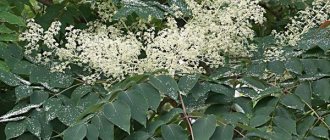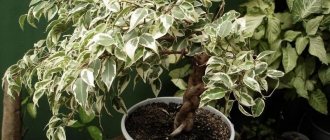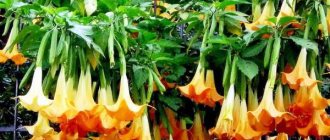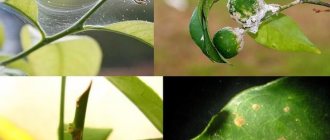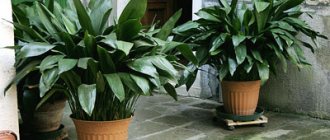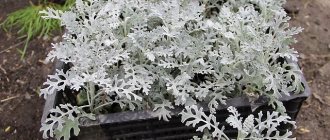Brief botanical information
This plant, which has become a house tree, came to us from South Asia, the Philippines, and Australia. The height of Ficus Benjamin in natural conditions exceeds 8 meters, but indoors it is unlikely to exceed 2 meters.
The gray-brown trunk sends out branches that slightly bend downwards. The leaves are attached with small petioles (up to 2.5 cm). The leaf itself is oval in shape with a pointed oblong end. The length of the leaf blade is from 4 to 8 cm, width - up to 4 cm. Dense glossy foliage creates a very decorative effect. The color of the leaves depends on the variety. There are dark green colors, many varieties of variegated foliage, and varieties with a light green color.
Types of ficus weaving
There are several options for ficus weaving, the choice depends on the preparation of the plant itself. There are several options for how to weave ficus.
Spiral
The most popular and simplest option for arranging a flowerpot with a beautiful ficus composition. Circular weaving is simple but effective. Produced by braiding a support. As it grows, the stem is bent along the contour of the selected base. After fixing the shape of the trunk, the support can be removed.
Spiral from the trunk
Hedge
This version of the composition is complex. First you need to plant the seedlings in a row. Next, the stems can be intertwined with each other according to different types.
Note! Honeycombs, diamonds, ovals are often used
Hedge
Pigtail
To weave a braid from Benjamin's trunk, you need to wait until the thickness of each seedling reaches 1 cm. Next, weaving is done according to the principle of how hair strands are folded.
Pigtail
Column
The difficulty may lie in merging adjacent trunks. Inexperienced gardeners can damage the flower too much, which can lead to the death of the specimen.
Column
Important! For each weaving option, an individual form of planting seedlings is produced. A beginner can handle spiral and braid weaving, but forming a hedge is more difficult
It is necessary not only to build the correct support, but also to splice the elements together.
Ficus Benjamin - signs and superstitions
The difference in beliefs among different peoples is great: the Slavs at first greeted the plant with caution, attributing to it far from the best qualities. Other nations warmed to the ficus and considered its presence in the house a harbinger of prosperity.
Some people believe that keeping this type of ficus in the house is not worth it - it promises failure in matters of the heart. For some reason, they assume that in this case the girl’s relationship with the young man will not lead to marriage. Another not-so-good superstition is the belief that a man living in the same area as this flower will have a bad character.
Others believe that Ficus Benjamin brings only positive energy into the house and strengthens family relationships. Thailand attributes special qualities to this tree, recognizing it as sacred. The Chinese have a similar attitude. In these countries they believe that keeping ficus in the house is not only possible, but also absolutely necessary. Some superstitions say that placing ficus Benjamin in the kitchen qualitatively improves the atmosphere of the home, creating comfort not only externally, but also on a deep energetic level. Another sign we can call is the belief that having a ficus tree in the house helps you get pregnant.
Varieties for growing at home - names and photos
Ficus benjamina species differ in leaf size and color. You can find the variety that will suit not only the design of your room, but will also firmly settle in your heart. The most popular variety is Daniel .
The glossy dark leaves of the Daniel variety perfectly decorate any room.
The Monique variety with its delicate thin branches attracts with some waviness of the edges of the leaf blade.
And the Monique variety will decorate any room with its unusual curly crown.
In the Lovely , pay attention to the light, almost white edges of the leaves.
Ficus Lovely amazes with its color contrast
Kinki variety is a representative of variegated forms.
Kinki has a more elongated leaf
Golden King is an interesting variegated variety that will look good against any plain background.
Golden King - a handsome guy that resembles a voluminous spotted blanket
The ficus variety Benjamin Natasha is very popular. Caring for it at home is not difficult, so this variety is very common.
Natasha is a very common name in Rus'; you can also often find the ficus variety of the same name in apartments
Proper care of ficus at home - is it difficult? In a special publication on our portal we will talk in detail about ficus plants. You will learn the types of indoor ficuses, how to care for ficuses depending on the type, how to form a bonsai from a ficus, and the problems that arise from improper care.
Why is weaving done?
Ficus benjamina is intertwined not only for the sake of the plant’s attractiveness, although this is also one of the goals of this procedure. Additional weaving tasks:
- ficus trees grow quickly. In order not to worry about increasing the growth of the stem, and not to construct awkward supports, you need to decorate it;
- the beautiful shapes of the flower trunk will fit perfectly into any composition of a small or large greenhouse;
- Those who like to tinker with indoor plants can pay a lot of attention to this kind of care.
Ficus in the interior
The main purpose of weaving is determined by the needs of the grower.
How to care for ficus benjamina
Actions for caring for Ficus Benjamin should become automated. There is nothing complicated; caring for a tree is not only simple, but also interesting.
Proper care gives the plant the opportunity to show its best side.
Location in the house
Good lighting - yes, direct sunlight - definitely no. Try to choose a place where there will be an abundance of diffused light. Such lighting is usually located near western or eastern windows. If your windows face south, then leave the ficus a little to the side or consider shading during the midday hours. North windows will have a lack of lighting.
Lighting and temperature
In summer, ficus prefers from +18 to +23°C, and in winter +16°C is enough, but the temperature should not drop below. Wintering at room temperature is suitable. In the warm season, the plant loves fresh air. In summer, the tree is taken out onto the balcony, protected from the wind.
Air humidity
After direct sunlight, this will be the second “no” that the ficus will tell you - no dry air! Here you should focus on the natural conditions of the tree, where there is high humidity all year round.
Do not confuse the air humidity parameter with watering.
The humidity around the plant can be increased by any available means; regular spraying of the leaves will also work well.
How to water correctly
Watering in summer should be more abundant than in winter. But there is no need to flood the plant, otherwise you will get root rot and lead to the death of the tree. It is enough to water 2-3 times, allowing the top layer of the substrate to dry.
What soil is needed for ficus benjamina?
Select the soil for ficus benjamina so that the combination of deciduous soil, turf, coarse sand and peat is in proportions 2:2:1:1. It is good to add charcoal to the peat layer. You can purchase ready-made substrate for ficus.
How to feed ficus benjamina at home
Your tree needs feeding from spring to late autumn. A complex mineral fertilizer for Ficus Benjamin is suitable for this, which needs to be fed to the plant once every two weeks. In winter, ficus is fertilized once every 1-1.5 months.
Trimming and shaping the crown and stems of Ficus Benjamin
Although it is recommended to plant 2-3 plants in one pot at once, nothing bad will happen if your ficus grows in one trunk. Before you start shaping the crown, you should know when to start pruning your Ficus Benjamin. A tree that needs pruning has elongated, poorly leafed branches. You should not bring the ficus to this state. We will tell you how to properly trim ficus benjamina.
Examine the tree. Select the longest branches and shorten them with sharp scissors, removing the tip with 2-3 buds. This procedure is carried out in the warm season before the next feeding. All cuts are sprinkled with charcoal, as the plant exudes milky juice.
Braiding stems
Look how beautifully the ficus trees are woven into a braid. This is a good answer to the question of how to form Ficus Benjamin at home - you need to immediately plant 3 plants side by side and gradually weave them into a braid. The bark that touches the stems is cut, and the trees grow together. You can go the other way: use a braid to braid a cylindrical object, which is then taken out.
Compositions in bonsai style
Growing an indoor ficus bonsai is the easiest way to obtain such an interesting plant shape. Select a flat, elongated container into which a small ficus is planted. Wire and weights serve as clamps for bending branches. After six months, the load can be removed and the branches turned in a different direction. All types of bonsai require abundant feeding.
Please note that bonsai is an art, and your ficus will take many years to turn into a magnificent tiny tree
Pruning Ficus Benjamin at home. Training video
Ficus crown formation
Ficus benjamina itself has a beautiful crown; many varieties do not require any special shaping. However, if the ficus trunk is bare, you can stimulate the formation of new shoots and leaves by pruning. To do this, you can cut off part of the shoots, completely or partially; sometimes it is enough to pinch the tips of the lower branches so that new buds begin to grow. Pruning should be done in spring - early summer. The younger the ficus tree, the easier it is to shape by pruning.
In addition to pruning and pinching, the crown of ficus trees is formed by bending it with wire (to form bonsai and pre-bonsai). Ficus shoots are quite flexible and bend easily, but the thin bark can crack or peel off from the wire, so it is applied loosely and braided wire is used. There should be a gap between the wire and the ficus stems - after all, the plant grows and the branches gain thickness; if the wire is wound tightly, the wire will eventually grow into the bark.
Ficus Baroque is formed using wire; the flexible trunks of the ficus can be bent quite steeply, trying to achieve the chosen bonsai style.
If you are forming a ficus by merging the trunk, then when braiding a pigtail from several trunks, be sure to leave gaps between them so that the trunks can grow in thickness. Drawing by Vitaly Alenkin.
Merging trunks - several rooted cuttings are planted close to each other and wrapped with electrical tape. Part of the electrical tape has been removed and the joints of the trunks are clearly visible. Further shaping is required.
Cuttings of some varieties of ficus benjamin branch reluctantly; single branches look and gain strength slowly, they can stretch upward, even with sufficient lighting, and begin to branch, reaching approximately 30-40 cm in height. Therefore, it is worth pinching and cutting the cuttings at a height of approximately 20 cm.
You can plant several cuttings in a pot and, if the stems are pressed tightly against each other, then in a very short time they grow together. You can bring the stems of ficus cuttings closer together using ordinary electrical tape - it is quite flexible and does not injure the bark; it stretches on the growing trunks without growing. About once a month you need to inspect the braid and rewind it if necessary. It is better, of course, for trunks of small diameter, 5-7 mm, to grow together, but thicker ones can also be fused, but the process will take several years.
Another way of forming is to intertwine the trunks with a pigtail or in the manner of a hedge - openwork weaving from the trunks of ficus benjamina. This method is only suitable for young flexible plants. In this case, several large cuttings must be planted in one elongated container at a distance of 5 to 10 cm from each other, strictly in a row. Initially, each trunk grows vertically and is formed into a standard (all lower branches are removed). At approximately a height of 20-25 cm, ficuses can be fixed, tilted, crossing the trunks with each other. Secure with electrical tape or jute.
Transplanting Ficus Benjamin at home
If you want to understand when it’s time to replant your ficus benjamina, start with the time of year. Spring is suitable for this purpose. The frequency of replanting for young plants is 1-2 years, and for adults - 2-3 years. For very large ficus, instead of replanting, the top layer of soil is simply replaced. The roots peeking out of the drainage hole will tell you when it’s time to replant the Ficus Benjamin into a large pot. The crown of the plant requires more nutrition, and if replanting is not done in time, the tree will slowly begin to wither. We invite you to watch a video with tips on how to transplant Ficus Benjamin into a large pot.
Methods for propagating Ficus Benjamin
The choice of propagation method is represented by cuttings, sowing seeds and air layering. Seeds are sown in early spring, covering the container with a bag and placing it in a warm, bright place. They germinate within a month, and, as a rule, after the appearance of the second true leaf, the young sprouts are planted in individual pots.
Reproduction using layering is used for difficult to grow varieties . You need to select a branch of small thickness and cut the bark on it with a ring, wrap it in damp moss and wrap it in polyethylene. After some time, roots will appear, and the cuttings are cut off for planting in the ground under the bag.
The common method of propagation is that a cutting of 15 to 25 cm is cut from the plant. It must be placed in warm water so that the milky juice flows out, and then the water must be replaced with clean water at room temperature. A piece of charcoal thrown into the water will prevent the future ficus from rotting. As soon as the roots appear, the cutting is transplanted into the ground under a plastic cap, which must be gradually removed to adapt the plant to the air environment of the room.
Cuttings are sensitive to dry air, which is why a polyethylene cap is used
Choosing a growing position
This plant needs quite specific conditions. If you provide them, caring for your ficus will be much easier, and falling leaves and other diseases will not bother you.
The ficus pot should be placed in a place where the temperature is 20-24 degrees Celsius; it cannot be grown on the balcony or in the garden.
The minimum air temperature in the apartment should not fall below 13 degrees Celsius. In summer, the maximum temperature should be 24 °C. Sometimes the temperature can exceed 25 °C, but the main thing is to protect the plant from the scorching rays of the sun. It is also important to avoid drafts.
Ficus is harmed by dry air, so it is worth increasing the humidity, especially in winter, when problems arise under the influence of central heating.
The most important condition for ficus is the correct intensity of sunlight. Ficus benjamina has very high requirements in this regard. It loves the sun, it needs a lot of light, otherwise there is a risk of leaves falling off. But the plant does not need direct sunlight; it is better to place it at a short distance from the window.
The ficus gets used to the angle of light, so you can’t move or rotate the pot. Even a slight displacement slows down the growth of shoots and leaves and causes numerous problems in growing. It is worth making a sign on the pot indicating how the pot is placed relative to the window. The position of the plant must be carefully considered for 2 reasons:
- it should not be rearranged;
- The ficus is quite large and will need a lot of space in a few years.
Advice. Ficus is very sensitive to sudden changes in temperature; when buying a flower in the cold season, it is worth wrapping it in paper during transportation. Too long a trip or lack of light can cause the plant to start losing leaves once it gets home.
Diseases and pests of Ficus Benjamin
Fortunately, pests do not attack this flower so often. Usually these are scale insects, mealybugs and thrips. The scale insects need to be washed off the plant with warm water and laundry soap, and then the bush should be treated with a fungicide (Fitoverm, Aktellik, Aktara). Fungicides will also help against thrips. Mealybugs are collected by hand.
Scale insects suck the life force out of the plant
The leaves of Ficus benjamina may turn pale. This is a direct consequence of lack of lighting. If the leaves look not only pale, but also lethargic, then the ficus is overly flooded with water. Give the plant a rest, and if there is no result, then replanting into a new substrate is required. Rotten roots are removed before transplanting, the rest are watered with Kornevin.
How to get rid of midges in indoor flowers using simple methods. In a special publication on our portal, we will talk in detail about how to get rid of pests in indoor plants. You will learn the reasons for their appearance, the types of midges and their signs and measures to prevent the appearance of midges.
Treatment of plant trunk
To ensure that the stems can intertwine into the correct crown, you need to trim off excess shoots and sprouts. If you miss this moment, the leaves will weigh down the crown and tilt the plant down.
Note! It is strictly forbidden to prune more than five sprouts at once.
After the procedure, the cut sites should be treated with activated carbon powder or any antiseptic. But you can’t use too much product. If everything is done correctly, the flower will actively and correctly develop.
What to do if ficus benjamina drops leaves
If you are faced with the problem of dropping leaves, then pay attention to the soil: a lack of moisture affects it just as bad as waterlogging. Foliage may also fall if there is a high level of air dryness, temperature changes, or the tree is standing in a too cold room. Do not forget that this royal flower is not watered with cold water!
If you do everything right, your trees will look divine!
We have discussed the basic steps for caring for this plant. We hope that our recommendations will help you eliminate mistakes when raising your pet.
How to plant a flower so that the stems intertwine?
To create a minimal structure, you need to take at least three cuttings. To get a more interesting picture you will need a little more shoots.
To form a more interesting design, you should take enough seedlings to completely fill the future composition.
Shoots are selected of the same diameter so as not to spoil the overall decorative picture
It is especially important to follow this rule when creating a braid or circular weave.
It is best to plant stems in the first months of spring. This will allow them to develop much faster. And in a month you can start experimenting with creating decorative compositions.
If you plan to splice trunks, then it is better to take shoots not 10 cm, but 15, since thin bark already appears on such seedlings. During the growing process, the bark should be regularly trimmed in places where the trunks meet. This must be done very carefully so as not to harm the plant.
The choice of pot in which the composition will be created needs to be given special attention. To place a hedge, you will need a wide container with high walls of a rectangular or oval shape.
For a braid or spiral, a regular pot will do. In addition, one should not forget about the number of sprouts used - this also affects the size of the container.
- brick chips;
- pebbles;
- expanded clay;
- artificial stones.
The height of the drainage layer depends on the height of the pot.
Important! Roots of cuttings that are too long or damaged need to be trimmed. The soil mixture for ficus should consist of peat, sand and leaf soil
You can buy it in specialized stores or prepare it yourself. You need to pour half of the prepared soil onto the drainage. The cutting should be placed so that the root collar is above the ground surface. The roots must be straightened and sprinkled with soil.
The soil mixture for ficus should consist of peat, sand and leaf soil. You can buy it in specialized stores or prepare it yourself. You need to pour half of the prepared soil onto the drainage. The cutting should be placed so that the root collar is above the ground surface. The roots must be straightened and sprinkled with soil.
Leave a gap of several centimeters between the soil and the edge of the pot.
After planting, the soil should be sprinkled with warm water with the addition of growth stimulants. The first feeding is carried out 3–4 weeks after the seedlings take root.


